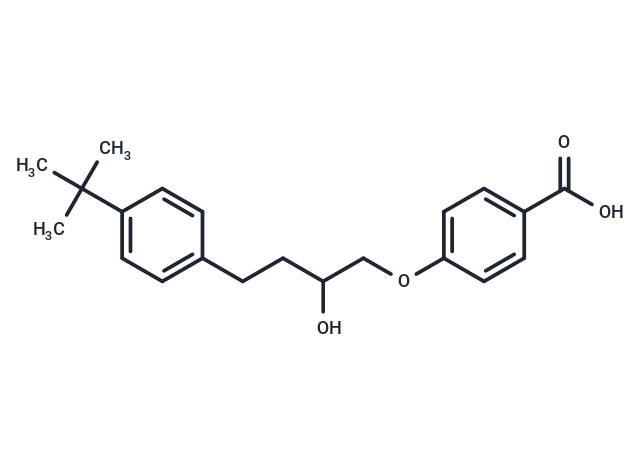Shopping Cart
- Remove All
 Your shopping cart is currently empty
Your shopping cart is currently empty

Lifibrol (U-83860) is an inhibitor of cholesterol synthesis.Lifibrol has anticholesterol and hypolipidemic properties and promotes the conversion of LDL Apo B-100 in patients with hypercholesterolemia and mixed hyperlipidemia.

| Pack Size | Price | Availability | Quantity |
|---|---|---|---|
| 1 mg | $88 | In Stock | |
| 5 mg | $210 | In Stock | |
| 10 mg | $318 | In Stock | |
| 25 mg | $515 | In Stock |
| Description | Lifibrol (U-83860) is an inhibitor of cholesterol synthesis.Lifibrol has anticholesterol and hypolipidemic properties and promotes the conversion of LDL Apo B-100 in patients with hypercholesterolemia and mixed hyperlipidemia. |
| In vivo | Resident peritoneal macrophages isolated from rats pretreated with Lifibrol (50 mg/kg/7 days; mixed into the feed) showed a decreased capacity to synthesize cholesteryl esters from labeled precursors ([1-14C]oleate and [4-14C]cholesterol). Modification of lipid metabolism in atherosclerotic aortae from swine and Watanabe heritable hyperlipidemic (WHHL) rabbits was also observed when the tissues were incubated in vitro in the presence of exogenous Lifibrol.[5] Concentrations of lifibrol of up to 50 micrograms/mL in the incubations selectively reduced the formation of cholesteryl esters from [1-14C]acetate by 60-75%, whereas higher concentrations (100 micrograms/mL) resulted in a generalized inhibition of lipid biosynthesis of about 50% and of cholesteryl ester formation by up to 90%. The ability of lifibrol to directly affect these targets (i.e. macrophages and arterial tissue) has implications that extend beyond its confirmed plasma cholesterol-lowering activity.[5] |
| Alias | U-83860, U 83860, K-12148, K12148, K-12.148 |
| Molecular Weight | 342.43 |
| Formula | C21H26O4 |
| Cas No. | 96609-16-4 |
| Smiles | C(CC(COC1=CC=C(C(O)=O)C=C1)O)C2=CC=C(C(C)(C)C)C=C2 |
| Relative Density. | 1.138g/cm3 |
| Storage | Powder: -20°C for 3 years | In solvent: -80°C for 1 year | Shipping with blue ice. | |||||||||||||||||||||||||||||||||||
| Solubility Information | DMSO: 50 mg/mL (146.02 mM), Sonication is recommended. | |||||||||||||||||||||||||||||||||||
Solution Preparation Table | ||||||||||||||||||||||||||||||||||||
DMSO
| ||||||||||||||||||||||||||||||||||||

Copyright © 2015-2025 TargetMol Chemicals Inc. All Rights Reserved.